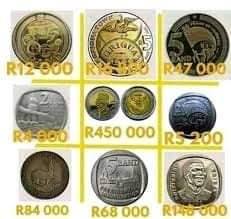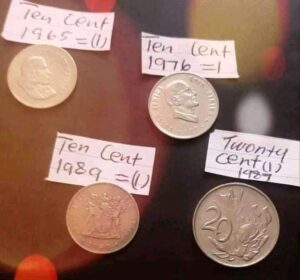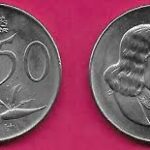The rand was introduced in the then Union of South Africa on 14 February 1961, shortly before the establishment of the Republic on 31 May 1961.
The coins bore the forward-facing portrait of Jan van Riebeeck on the obverse.[1]
The initial circulation coins of the Republic were the following:[2]
1⁄2 cent (approximately replaced 1⁄2d)
1 cent (approximately replaced 1d)
21⁄2 cents (replaced 3d) – nicknamed Tickey, being the smallest in size coin
5 cents (replaced 6d)
10 cents (replaced 1s)
20 cents (replaced 2s)
50 cents (replaced 5s)
The coins initially had the same size as the former South African coins.
All except the 1⁄2 and 1 cent coins were in silver. The previous South African farthing coin (¼d) and half-a-crown (2+1⁄2s) were not continued in decimal currency.
In addition, two bullion coins with denominations of 1 rand and 2 rand were issued, replacing the gold half-pound and pound coins introduced in 1952.
Both the pound and the rand gold coins matched the specifications of the British half-sovereign and sovereign (minted, among others, at the Pretoria branch mint until 1932), including the gold alloy (crown gold) with a fineness of 22 carat (91.67%).
The reverse of the gold rand coins features the well-known pronking springbok illustration designed by Coert Steynberg for the 5-shilling coin introduced in 1947.






